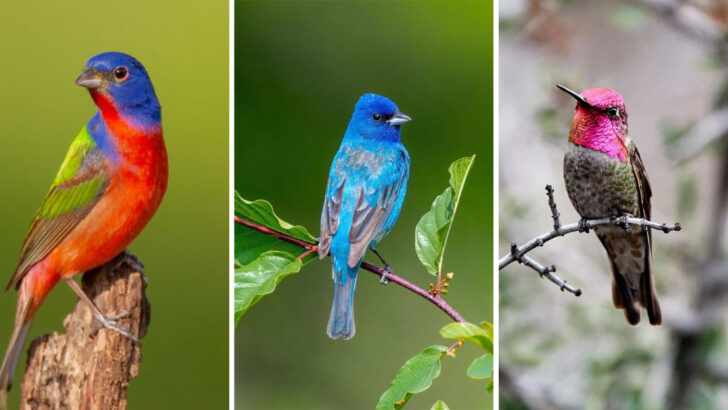Get ready to be amazed—there are birds in the U.S. so vibrant, they almost look like they’re straight out of a fantasy world. Their feathers burst with colors that seem too perfect to be real.
From dazzling blues to fiery reds, these feathered wonders are nature’s own paintbrush. You won’t believe your eyes when you see them in their full glory.
These birds aren’t just pretty faces, either. Their beauty is an essential part of who they are—helping them survive, thrive, and stand out in the wild. Each feather seems to tell a story of survival and seduction, a dazzling display of nature’s art.
So buckle up and get ready to meet the U.S. birds with the most jaw-dropping feathers. You might just find yourself staring in awe, wondering how such beauty can exist in the wild.
Painted Bunting
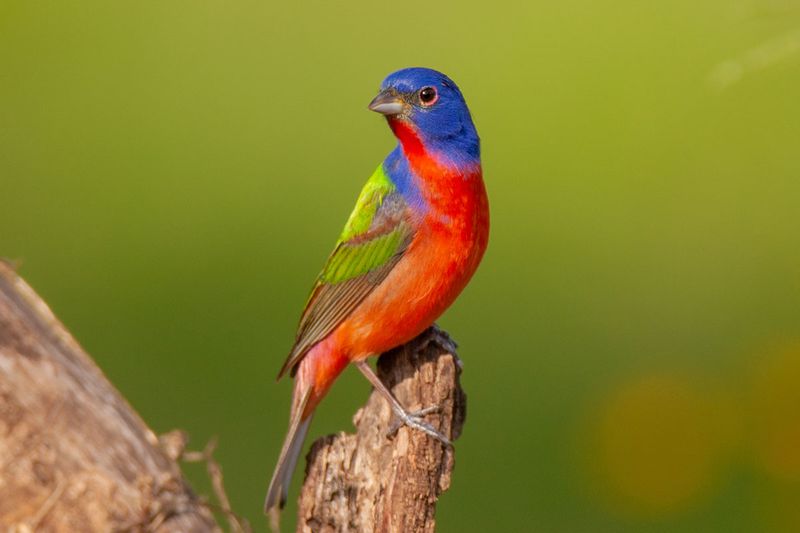
Bursts of color dance through the air when the painted bunting takes flight. This small bird, often seen flitting around the southeastern United States, looks like a living rainbow. Male painted buntings boast a kaleidoscope of colors, from bright blue heads to vivid green backs and striking red underparts. Watching them dart through the foliage is like witnessing a painting in motion.
Males use their stunning plumage to attract mates, making them a true spectacle during the breeding season. These shy birds prefer dense thickets, where they can sing their melodious songs in peace.
American Goldfinch
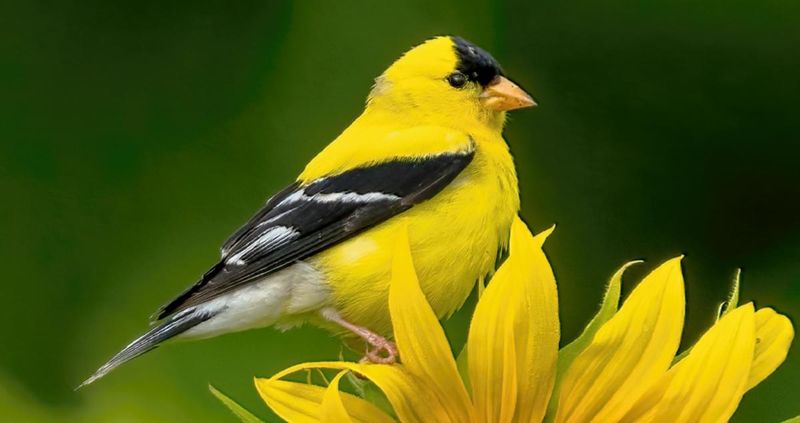
With the sun shining down, the American goldfinch appears to glow. Known for its bright lemon-yellow feathers, this small bird brings a touch of sunshine wherever it goes. They are commonly found across the United States, from fields to backyards.
During the summer, the males flaunt their vibrant plumage, perfect for attracting attention. As autumn approaches, they lose their dazzling hues, blending into the background. Their cheerful presence and delightful songs make them a favorite among birdwatchers and enthusiasts alike.
Scarlet Tanager
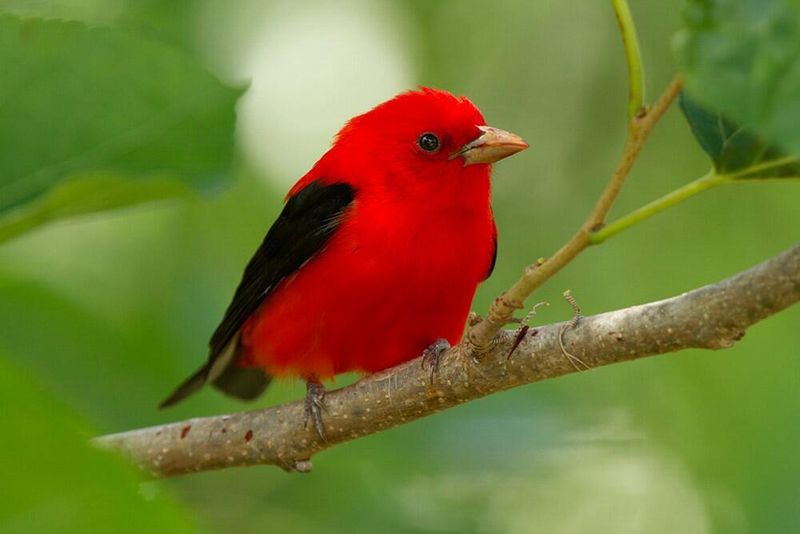
The scarlet tanager stands out with its fiery red feathers, a true spectacle in the forest canopy. This medium-sized songbird migrates from South America to the eastern United States to breed, bringing a splash of color to the woods.
Males are especially eye-catching in spring when their vibrant scarlet feathers contrast with jet-black wings. These birds are more often heard than seen, with their distinctive, burry song echoing through the trees. They prefer mature forests, where their brilliant colors can shine against the leafy backdrop.
Western Tanager
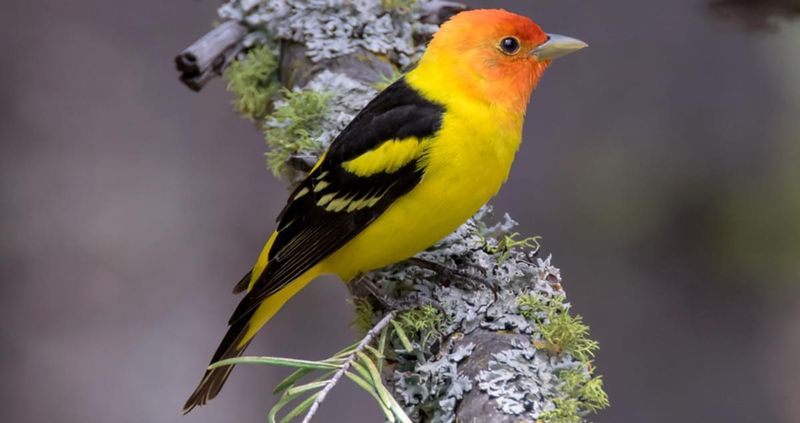
When the western tanager appears, it’s as if a piece of the sunset has landed among the pines. With its yellow body and fiery orange-red head, this bird is a vibrant addition to the coniferous forests of the western U.S.
During the breeding season, males use their colorful plumage to stand out and attract a mate. Despite their bright appearance, these birds can be surprisingly elusive, often hiding high in the tree canopy. Birdwatchers cherish sightings of this fiery avian gem.
Indigo Bunting
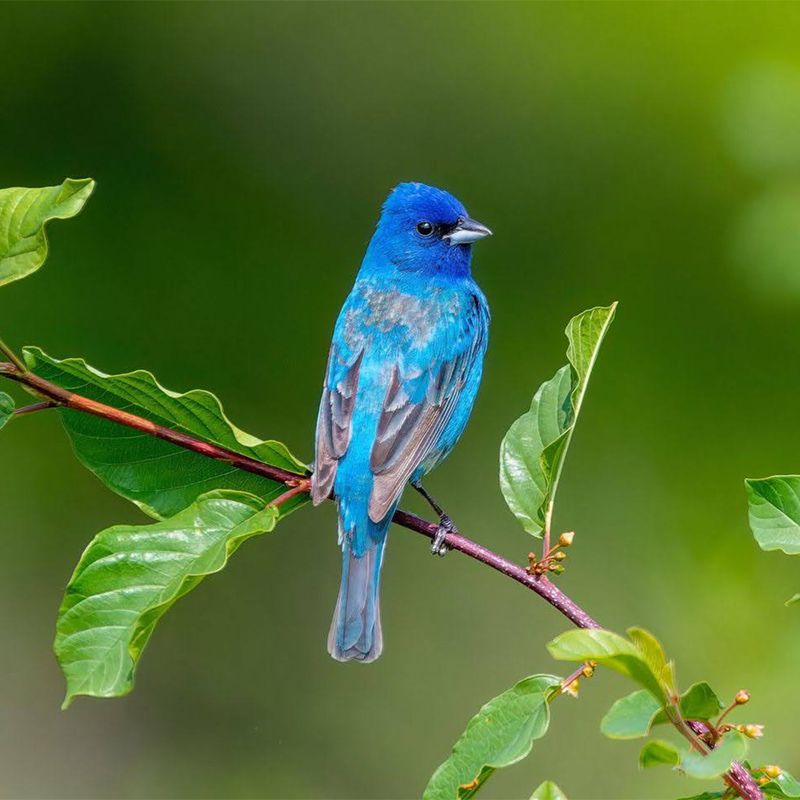
The indigo bunting is a small bird with an incredible blue hue that seems almost unreal. In the right light, the male’s feathers shimmer with various shades of blue, making it a mesmerizing sight.
These birds thrive in open fields and along roadsides, often heard before they’re seen, with their cheerful, musical songs. The indigo bunting is a true symbol of summer, brightening the landscape as they flit from perch to perch. Bird enthusiasts often seek them out for their stunning color and melodic calls.
Northern Cardinal

The northern cardinal, with its striking red feathers and crested head, is a familiar and beloved sight. This bird brings vibrant color to the winter landscape, standing out against the stark white snow.
Cardinals are known for their strong, clear whistles, often heard brightening the silence of winter days. Their bold appearance and year-round presence make them a favorite among backyard birdwatchers. Males are especially eye-catching, with a deep red hue that seems to defy the cold surroundings.
Baltimore Oriole
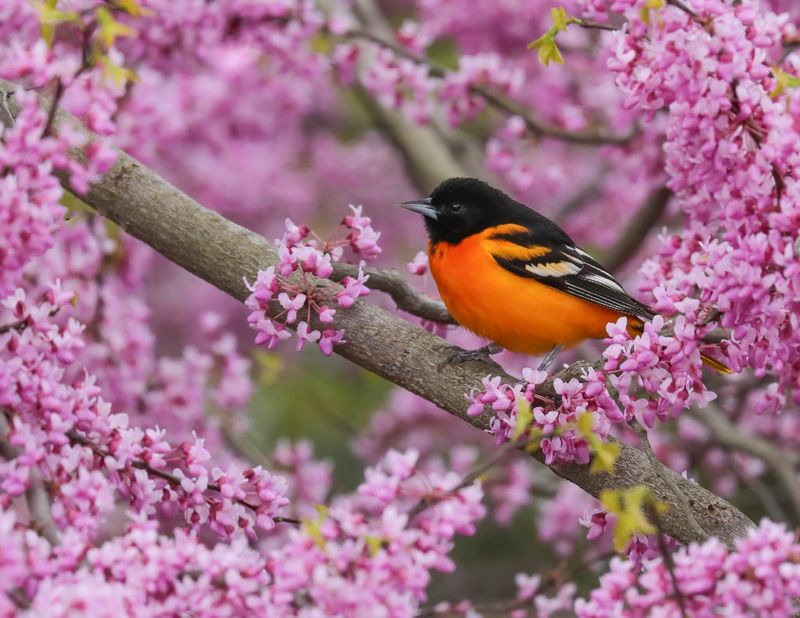
The Baltimore oriole is a burst of fiery orange and striking black, often seen flitting through treetops. This medium-sized songbird is a migrant traveler, arriving in the eastern U.S. to breed as spring blooms.
Males are particularly vibrant, their orange feathers glowing like embers against the green leaves. Orioles often visit gardens, attracted to nectar feeders or juicy fruits. Their beautiful songs and vivid appearance make them a symbol of spring renewal, celebrated by birdwatchers every year.
Anna’s Hummingbird
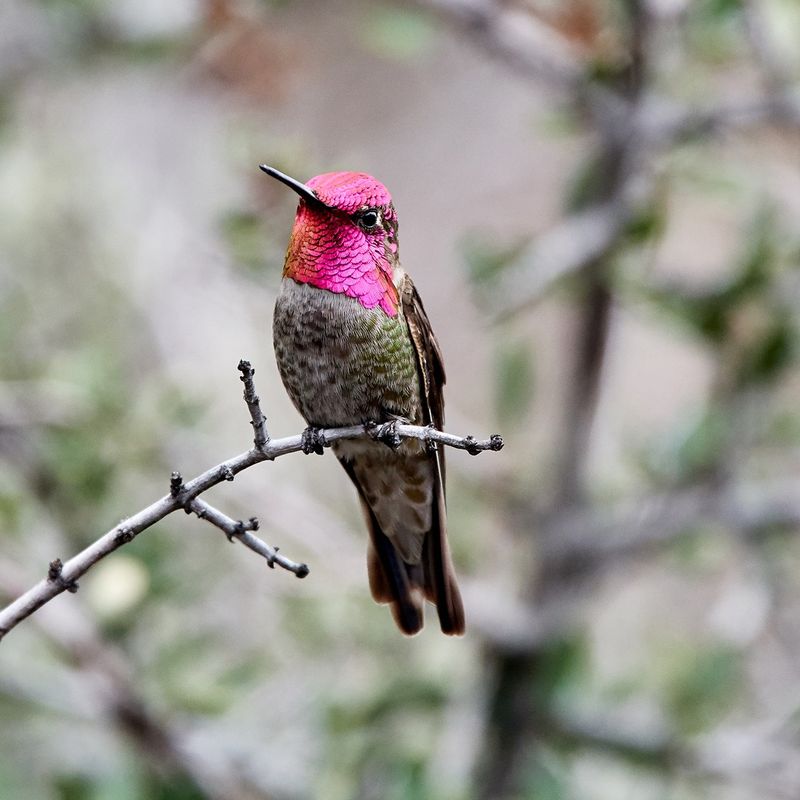
The shimmering jewel-like appearance of Anna’s hummingbird captivates all who see it. This tiny bird, with iridescent green and rose-pink feathers, seems to defy gravity as it hovers gracefully.
Found along the Pacific Coast, these hummingbirds are a year-round spectacle, sipping nectar from vibrant blooms. Males put on dazzling displays to attract females, their gorget feathers catching the light and flashing brilliant colors. Their rapid wingbeats produce a distinctive buzz, adding to their enchanting presence in gardens and parks.
Purple Martin

Purple martins, with their glossy purple plumage, are captivating aerial acrobats. These birds are the largest North American swallows and are known for their swift, graceful flight.
In the breeding season, colonies of purple martins can be found in birdhouses, often set up by enthusiasts eager to provide a nesting home. As they soar through the sky, their iridescent feathers gleam in the sunlight. Their social nature and stunning appearance make them a cherished sight, especially in open fields and parks.
Roseate Spoonbill
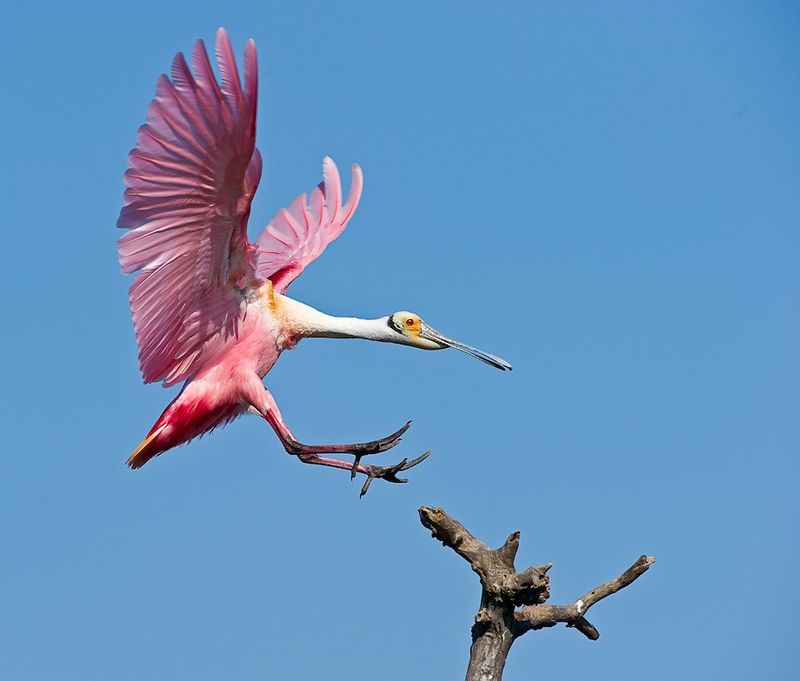
The roseate spoonbill, with its bubblegum pink plumage, is truly a sight to behold. This wading bird, found in the southern United States, stands out in wetlands and marshes.
Their unique spoon-shaped bill helps them sift through the water for food, creating a captivating spectacle. As they spread their wings, the sunlight catches their pink feathers, creating a mesmerizing glow. These birds are social creatures, often seen in groups, adding a splash of pink to their surroundings.
Cedar Waxwing
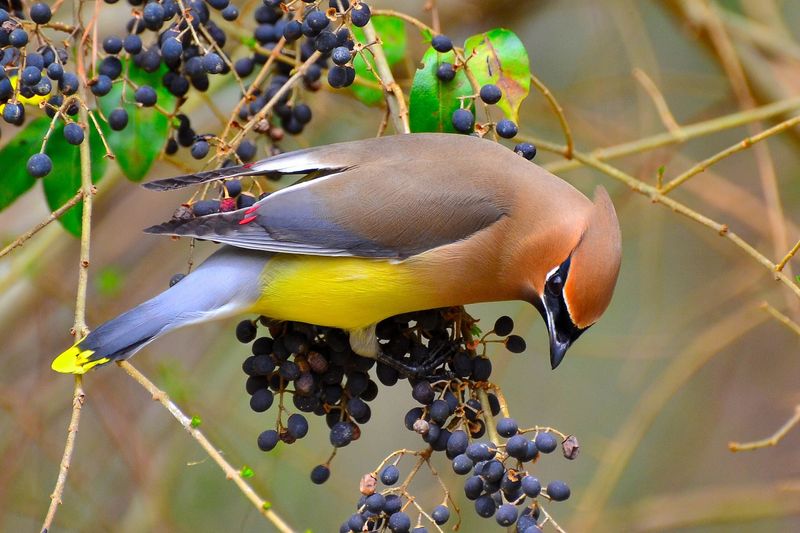
With its sleek silhouette and silky feathers, the cedar waxwing is a picture of elegance. This bird’s soft brown and yellow plumage is accented by a distinctive black mask and red-tipped wings.
Cedar waxwings are social birds, often seen in flocks feasting on berries. Their fondness for fruit is well-known, and their presence is a delight in any garden or orchard. With their gentle demeanor and striking appearance, they add a touch of natural grace to the landscape.
Rufous Hummingbird

The rufous hummingbird, with its fiery copper feathers, is a tiny, dynamic powerhouse. Known for its incredible agility, this bird is a frequent guest in gardens and meadows, seeking out nectar-rich flowers.
Males are particularly striking, their feathers shining in the sunlight, creating a brilliant display. Despite their small size, rufous hummingbirds are fiercely territorial, often seen chasing away larger birds. Their energetic presence and vibrant coloring make them a favorite among birdwatchers and nature lovers.

